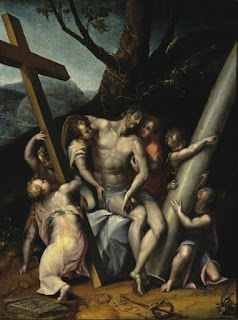Priest loved power, wealth...and his local pasta
 |
| As a diplomat, Cardinal Alberoni became the equivalent of prime minister of Spain |
Alberoni had a career punctuated by highs and lows, but he accumulated vast personal wealth and his memory lives on because of two dishes that are still served in Piacenza.
The son of a gardener, Alberoni rose to become a statesman responsible for the revival of Spain’s fortunes during the War of the Spanish Succession, and he was made the papal legate of Ravenna and Bologna.
After being educated by the Jesuits, Alberoni took holy orders and was appointed a canon at Parma in 1698.
In 1702, the government of Parma sent him on a diplomatic mission to Louis-Joseph, Duc de Vendôme, commander of French forces in Italy during the War of the Spanish Succession. He was then taken by Vendôme to France as his secretary in 1706, and to Spain a few years later, although he continued to act as an agent of Parma.
After Vendôme’s death, Alberoni remained in Madrid as the official representative of Parma. His influence at the Spanish court increased and he negotiated the marriage of Philip V of Spain to Isabella Farnese, the daughter of the Duke of Parma.
Alberoni became the equivalent of a prime minister for Philip V, and he carried out administrative and fiscal reforms at the Spanish court. He brought in foreign craftsmen to boost industry, while reducing the powers of the councils made up of aristocrats who were against his reforms.
 |
| Pier Leone Ghezzi's painting of Pope Clement XI conferring the cardinal's hat to Giulio Alberoni |
Alberoni fled from Spain to Italy, but charges were laid against him by Spain in a bid to persuade the Pope to depose him as a Cardinal. However, he managed to avoid being arrested and took refuge in Austrian territory in Lombardy.
After Pope Clement XI died in 1721, Alberoni went to take part in the conclave that elected Pope Innocent XIII. He was briefly imprisoned in a monastery by the new pontiff to satisfy Spain, who had accused Alberoni of sodomy, but he was later cleared of the charges by his fellow cardinals.
When Pope Benedict XIII was elected in 1724, Alberoni was made a cardinal deacon and given the church of Sant’ Adriano al Foro. He was later made the cardinal priest of San Crisogono.
After he was named legate of Ravenna, Alberoni had Porta Alberoni built in the city as a gateway to the dockyards, but this has since been moved.
He later retired to live in Piacenza and the Pope named him administrator of the hospital of San Lazzaro, an institution originally founded for lepers.
 |
| Coppa del Cardinale, named after Alberoni, is a popular cured pork in Emilia-Romagna |
After his death in 1752, he left money to the seminary and the rest of his fortune to his nephew. The huge collection of art he had accumulated is now on show to the public in a gallery inside Collegio Alberoni.
His private correspondence was to reveal his love of food, as among his letters there are requests for local delicacies to be sent to him, such as truffles, salame, robiola cheeses, and a type of local pasta known as anolini.
At least two Piacenza dishes are named after him, the cured pork dish, Coppa del Cardinale, and the pasta dish Timballo Alberoni, which contains macaroni, shrimp sauce, mushrooms, butter and cheese.
Alberoni was buried inside the Church of Collegio Alberoni, to which he had bequeathed the sum of 600,000 ducati, a fortune at the time.
 |
| The 14th century Collegiata di San Fiorenzo in Fiorenzuola D'Arda's Piazza Molinari |
Fiorenzuola D’Arda, where Alberoni was born into a humble family, is a city in the province of Piacenza, which dates back to prehistoric times. One of its main sights is the 14th century church of Collegiata di San Fiorenzo in Piazza Molinari. The former Church of San Giovanni, which over the centuries has been used as a courthouse, barracks, and prison, now houses the town hall and municipal library. There is also a theatre named after the opera composer Giuseppe Verdi. Typical local dishes include anolini pasta in broth with cheese, and cold cuts served with ‘gnocco fritto’ (fried dumplings). Fiorenzuola sits in Val d’Arda, which is home to some of the most beautiful castles in the whole of Emilia-Romagna, set against a backdrop of gently rolling hills.
 |
| Antonello da Messina's masterpiece Ecco Homo in the Galleria Alberoni |
Piacenza is a city about 75km (45 miles) to the north east of Parma in Emilia-Romagna. The main square in Piacenza is named Piazza Cavalli because of its two bronze equestrian monuments featuring Alessandro Farnese, Duke of Parma, and his son Ranuccio I Farnese, Duke of Parma, who succeeded him. The statues are masterpieces by the sculptor Francesco Mochi. Collegio Alberoni still stands in Via Emilia Parmense in Piacenza. It is now a library, an historical and natural museum, and a seismological and weather observatory. Among the many works of art in Galleria Alberoni, which is inside the Collegio, is the masterpiece Ecce Homo by Antonello da Messina, and there are also many church furnishing objects and tapestries, which belonged to Cardinal Alberoni.
Also on this day:
1512: The death of tyrant ruler Pandolfo Petrucci
1910: The birth of Mafia boss Angelo Bruno
1972: Michelangelo’s Pietà damaged
1981: Propaganda Due suspects named
_(14803742183).jpg)











.jpg)














.jpg)
.jpg)



